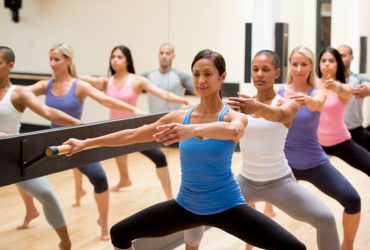When you’re trying to take your fitness to the next level, it’s natural to assume you should go longer and harder. But what if you didn’t have to? According to fitness authorities, like the American Council on Exercise and the American College of Sports Medicine, the key to achieving your goals isn’t doing more. It’s about balancing your training with a special kind of rest called active recovery.
What exactly is active recovery, and how can it work for you? Here’s everything you need to know.
What is active recovery?
Rest might be just what the trainer ordered. But that doesn’t mean lounging around on the couch with the crossword. According to recent research, the best way to re-energize sore, spent muscles—and come back stronger and faster—is to keep moving, just at a lower intensity. Why? “Recovery is all about blood flow to bring nutrients to muscles and joints for repair and to carry away waste products from broken down muscle tissue,” says Jonathan Ross, CPT, owner of Aion Fitness and author of Abs Revealed. “But muscles only get blood flow from movement.”
Active versus passive recovery
That’s not to say that curling up with a good book or vegging out in front of the TV is entirely useless. “The body will still recover, but it may take longer than if you were to incorporate active movement,” says Alana Myers, MS, CPT, an ACE-certified personal trainer and health coach.
That’s because this more passive recovery allows blood to pool in the extremities and doesn’t promote circulation. So, it’s not nearly as effective at delivering the nutrients that hungry, depleted muscles need to rebuild glycogen and creatine phosphate for better energy, power, and endurance. And it isn’t as efficient at removing waste products created during exercise, either.
Finding the right balance
If you’re wondering how much active recovery to aim for, the answer is different for everyone, depending on how fit you are and how hard you train. For example, someone who is in killer shape might be able to get away with as little as one day a week. But for most of us, taking a recovery day after two to three days of heavier workouts is a good goal. The best way to know for sure, says Myers, is by paying attention to how sore your muscles are.
5 ways to recover faster
One of the really nice things about active recovery is that it doesn’t require much time. For example, Ross likes to aim for two speedy 10-minute sessions a day targeting the sorest muscles (although you can always go longer if you like).
Which activities are best? “One person’s hour-long hike for active recovery will be another person’s workout, so it really depends on your fitness level,” says Ross.
If that sounds good, these activities can get you started.
Cross training. Switching up your workout is a great way to give tired muscles the break they need. If you usually run, try a leisurely bike ride. Or visa-versa. Intensity-wise, aim for 30 to 60 percent of your maximum heart rate.
Yoga or Tai Chi. “The movement back and forth through a full range of motion helps move blood through the tissues,” says Ross. Bonus: they’re great stress relievers too.
Swimming. “This is one of the few recovery options that eliminate gravity and allow your body to decompress, making it excellent for relieving pain and inflammation,” says Myers.
Foam rolling. Twenty minutes of post-workout foam rolling can significantly ease muscle aches and increase range of motion. Start at the furthest point from your heart, then roll toward your heart, pausing to concentrate on tender spots for 30 to 60 seconds, suggests Myers.
Stretching. When you’re short on time, try a quick stretch session, focusing on the sorest muscle groups for 30 to 90 seconds, suggests Myers.
As great as light exercise is for recovery, you don’t even need to get that granular. Gardening, washing your car, walking the dog, playing table tennis, or shooting hoops also work. In the end, says Ross, the best activity for recovery is the one you enjoy the most.
The post What is Active Recovery—and Why is It So Good for You? appeared first on Fitbit Blog.













